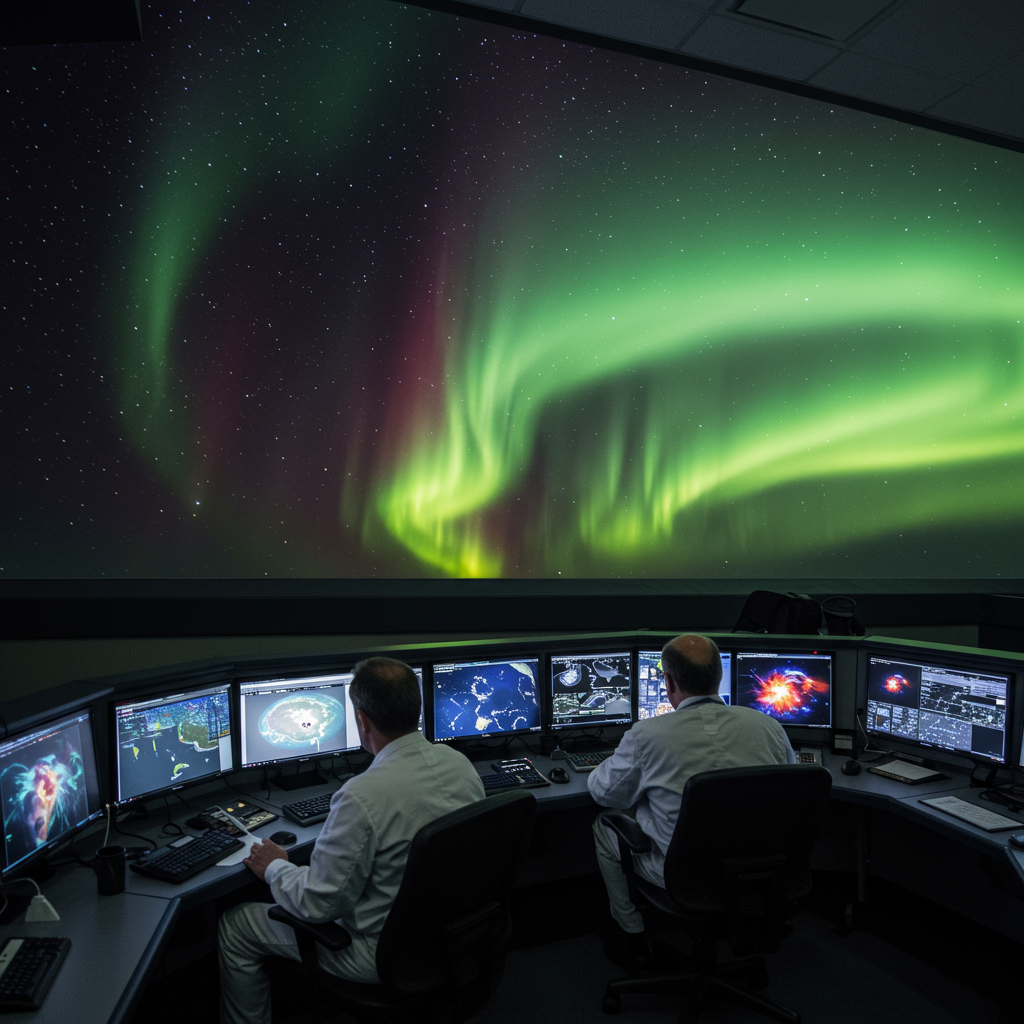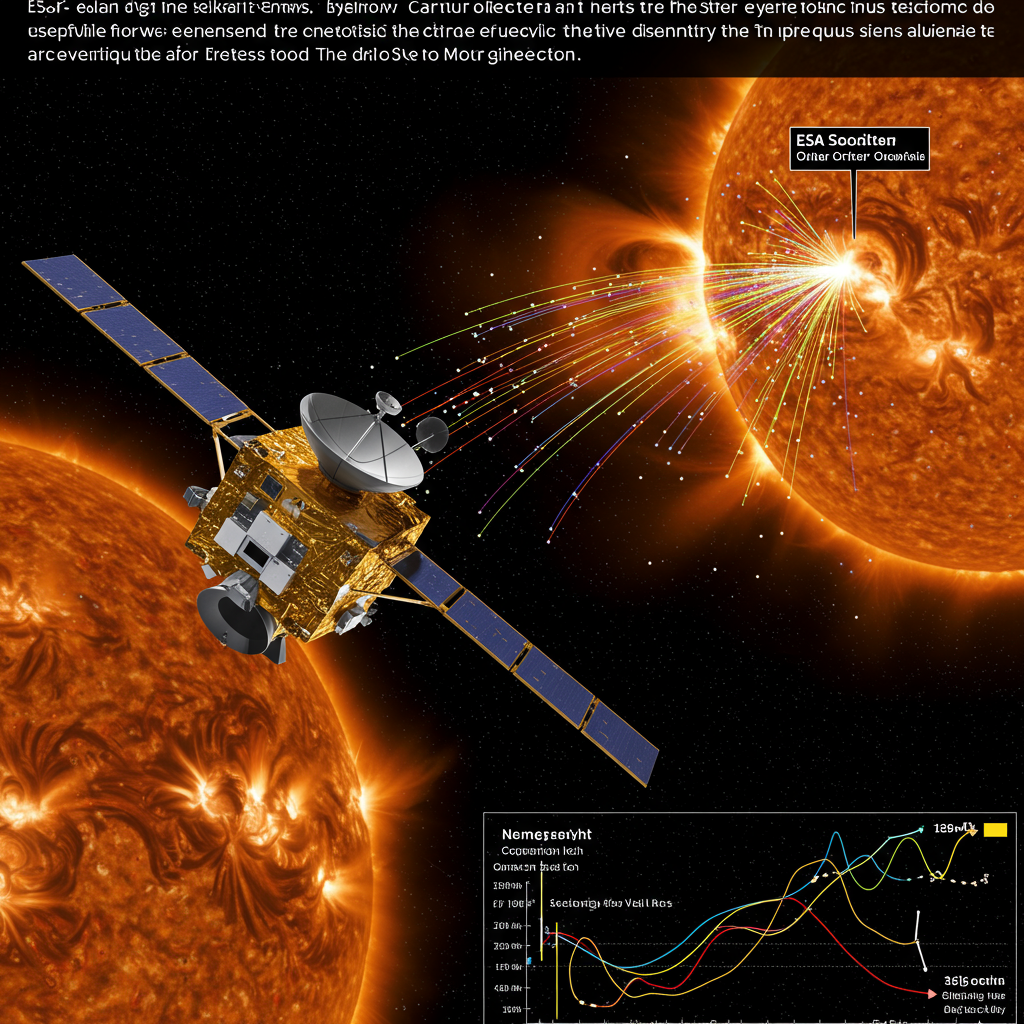solar storms, Earth’s most dramatic space weather events, can erupt with surprising intensity. While scientists constantly monitor the Sun’s activity, events like the powerful solar storm in April 2023 caught many off guard. This particular geomagnetic storm created dazzling auroras seen in unexpected locations, far south into the United States. But why was it so much stronger than anticipated, especially when preceded by only a weak solar flare?
Recent research, significantly boosted by NASA observations, is finally unlocking the secrets behind these unexpectedly powerful solar storms. Understanding these forces is crucial because intense solar activity poses tangible risks to our technology-dependent world, from satellites and GPS to power grids and communications.
The Mystery of Extreme Solar Storms
In April 2023, a coronal mass ejection (CME) launched from the Sun headed towards Earth. CMEs are vast clouds of plasma and magnetic fields ejected from the Sun’s outer atmosphere, the corona. Upon impacting Earth, they can compress our planet’s magnetic field, triggering geomagnetic storms. Usually, the intensity of a CME’s impact correlates with the strength of the associated solar flare, a sudden burst of radiation from the Sun’s surface. The April 2023 flare was minor, leading experts to predict a modest storm. The reality proved far more dramatic.
Unpacking the April 2023 Surprise
A study published in The Astrophysical Journal, involving researchers from NASA and other institutions, has shed critical light on this discrepancy. A key factor wasn’t the size of the flare itself, but the CME’s orientation relative to Earth and its interaction with the surrounding solar environment. The research, led by Evangelos Paouris at the Johns Hopkins Applied Physics Laboratory, highlighted the presence of a large coronal hole near the CME’s origin point.
Coronal holes are areas in the Sun’s corona where the Sun’s magnetic field lines extend outward into space, allowing solar wind to flow at much higher speeds than usual. The study found that this fast solar wind from the coronal hole acted like a strong “air current” in space, subtly pushing the CME. This slight shift redirected the CME’s path, bringing it into a more direct and impactful alignment with Earth’s magnetic field. Furthermore, the researchers determined that the magnetic fields within the CME were oriented in the opposite direction to Earth’s magnetic field, a condition that allows significantly more solar energy to funnel into Earth’s atmosphere. This “magnetic reconnection” process dramatically amplified the storm’s power.
Beyond Prediction: Unforeseen Impacts on Earth’s Atmosphere
The April 2023 storm offered more than just clues about CME dynamics; it also provided unprecedented insights into how powerful storms affect Earth’s upper atmosphere. NASA’s GOLD (Global-scale Observations of Limb and Disk) mission, which measures temperatures in the thermosphere (a layer roughly 85 to 120 miles high), recorded striking data.
During the storm, thermosphere temperatures soared. However, once the storm subsided, something remarkable happened: temperatures didn’t just return to normal; they plummeted to levels significantly lower than before the event. This dramatic cooling involved a temperature drop of 90 to 198 degrees Fahrenheit, pushing the thermosphere into a much cooler state. This widespread temperature decrease following a major geomagnetic storm was the first time scientists had observed such a rapid and extensive cooling effect.
According to Xuguang Cai from the University of Colorado, who led the GOLD research team, this cooling has significant practical implications. Cooler thermosphere temperatures cause the layer to contract. This lowers the density of the atmosphere at the altitudes where many satellites and space debris orbit. Reduced density means less atmospheric drag on objects in orbit. Consequently, satellites and debris can stay in orbit for longer periods than expected. This effect, while seemingly minor, can complicate efforts to manage space traffic and potentially increase the risk of orbital collisions.
The Sun’s Fury in Context: Solar Maximum and Recent Events
The April 2023 event didn’t occur in isolation. It’s part of a broader pattern of increased solar activity as our Sun approaches the peak of its approximately 11-year solar cycle, known as solar maximum. NASA and NOAA recently confirmed that the Sun has entered this most active phase, expected to last for roughly another year. During solar maximum, magnetic activity intensifies, leading to more frequent and powerful solar flares and CMEs.
The current cycle, Solar Cycle 25, has already shown activity slightly exceeding initial predictions. While the Sun has delivered some powerful blows, the intensity of these events remains within the range expected for this active phase. However, the sheer number of active regions on the Sun increases the probability of geoeffective events.
Lessons from the May 2024 Superstorm
Just over a year after the perplexing April 2023 event, the world experienced another, even more intense display of the Sun’s power: the May 2024 geomagnetic superstorm. Referred to as the “Gannon storm” or “Mother’s Day storm,” this event reached G5, the highest level on the NOAA space weather scale, making it potentially the strongest storm in two decades and one of the most visually memorable in history.
Originating from a massive sunspot cluster, this storm sent multiple CMEs hurtling towards Earth, triggering widespread auroras seen as far south as the Caribbean. Beyond the stunning light show, the May 2024 storm served as a critical real-world test of our preparedness. Thanks to timely warnings from agencies like NOAA’s Space Weather Prediction Center, crucial infrastructure operators were able to take precautions. The North American power grid, in particular, demonstrated remarkable resilience, successfully avoiding the widespread cascading failures seen in some past events.
However, the storm also highlighted unexpected vulnerabilities. The agriculture industry, increasingly reliant on precision GPS for planting and harvesting, experienced significant disruptions. The impact on satellite signals halted farming operations during a crucial season, demonstrating that reliance on technology creates new points of failure during space weather events. This powerful event boosted public awareness about solar activity and reinforced the urgent need for continuous monitoring and improved prediction.
Remembering Earth’s Most Extreme Solar Blast
While recent events like May 2024 are concerning, they pale in comparison to the most powerful solar storm ever identified in the geological record. Analysis of ancient tree rings has revealed an extraordinary solar particle event that occurred approximately 14,300 years ago, during the last Ice Age. Scientists identified a massive spike in the carbon-14 isotope trapped in these ancient trees. This spike is a fingerprint left by an intense barrage of high-energy protons from the Sun hitting Earth’s atmosphere.
Using new climate models, researchers determined this ancient storm was over 500 times more intense than the 2003 Halloween storm, previously considered a benchmark for modern severe events. It even surpassed the 775 AD storm, the strongest identified in the last 12,000 years. This 12,350 BC event is now considered the “new worst-case scenario.” Were a storm of this magnitude to strike today, the consequences for our modern, interconnected, and technology-dependent society could be catastrophic, potentially causing long-lasting damage to power grids, satellite networks, and communication systems globally. Understanding such extreme events is vital for assessing the true risks we face.
Probing the Source: New Insights from Close Encounters
Understanding why solar storms become powerful requires studying the very processes that generate energetic particles near the Sun. NASA’s Parker Solar Probe, the first spacecraft designed to fly directly into the Sun’s atmosphere, is providing unprecedented insights. While making close passes, Parker has directly observed phenomena like magnetic reconnection, an explosive process where tangled magnetic field lines break and reconnect, converting magnetic energy into kinetic energy that accelerates particles.
Parker’s measurements close to the Sun have revealed particle acceleration much more powerful than expected, with protons exhibiting energy levels thousands of times higher than simple magnetic field strength would suggest. These observations confirm that complex magnetic field structures near the Sun are significant accelerators of the particles that fill the solar wind and make up CMEs. This fundamental data, gathered right at the source of space weather, is critical for refining the complex computer simulations used to predict solar activity and its potential effects on Earth.
Advancing the Alert System: AI and Strategic Positioning
Given the potential impact of powerful solar storms, predicting their arrival and intensity is paramount. Scientists are leveraging new technologies to improve space weather forecasts. One promising technique is GeoCME, a machine learning model trained by NASA using historical CME data from the SOHO (Solar and Heliospheric Observatory) spacecraft.
GeoCME analyzes patterns in CME images to predict the likelihood of a particular ejection triggering a significant geomagnetic storm at Earth. This AI-driven approach has shown impressive accuracy in identifying geoeffective CMEs. Furthermore, recent observations, particularly during the May 2024 superstorm, highlighted the value of strategic spacecraft positioning. Data from NASA’s STEREO-A spacecraft, located closer to the Sun than the standard monitoring point at Lagrange Point 1 (L1), demonstrated that positioning sensors further upstream could provide over two hours of additional warning time for incoming CMEs. This crucial lead time allows system operators on Earth to take protective measures.
Preparing for the Future: Why Prediction Matters
The increasing frequency of notable solar events as the Sun reaches its solar maximum underscores the importance of continuous monitoring and accurate prediction. Our modern world relies heavily on space-based and ground-based technologies that are vulnerable to the energetic particles and magnetic field fluctuations from solar storms. Satellites can be damaged, communication systems disrupted, and power grids overloaded.
While events like the May 2024 storm showed improved resilience, the potential for significant disruption remains, especially from events approaching the scale of the 14,300-year-old “worst-case scenario.” Ongoing research by NASA and other agencies, from fundamental physics studies with the Parker Solar Probe to advanced AI prediction models like GeoCME and strategic observational positioning, is vital. These efforts help us better understand the complex dynamics of the Sun and its effects on Earth, enabling us to build better defenses and provide timely warnings to protect critical infrastructure and daily life from the power of solar storms.
Frequently Asked Questions
Why are some solar storms surprisingly powerful?
The unexpected strength of some solar storms, like the April 2023 event, isn’t always tied to the size of the initial solar flare. Recent NASA research shows that key factors include the coronal mass ejection (CME) orientation relative to Earth, its interaction with fast solar wind streams from coronal holes, and the alignment of the CME’s magnetic field with Earth’s. When a CME’s magnetic field is opposite Earth’s, more energy flows in, boosting storm intensity.
How are scientists improving solar storm predictions?
Scientists are using advanced technology and strategic observations. NASA’s GeoCME system employs machine learning to analyze images of CMEs and predict their potential to cause geomagnetic storms. Additionally, missions like the Parker Solar Probe provide data on particle acceleration near the Sun, refining physical models. Observations from spacecraft like STEREO-A, positioned closer to the Sun than traditional points, offer earlier warnings for incoming CMEs, giving crucial time for preparedness.
How do powerful solar storms affect technology on Earth?
Powerful solar storms can significantly impact technology. The energetic particles and magnetic field changes disrupt satellite operations, potentially causing damage or altering orbits (as seen by GOLD mission findings on thermosphere cooling affecting drag). They can interfere with GPS and radio communications, disrupt aviation, and induce currents in long conductors that can overload and damage power grids. Recent events like the May 2024 storm highlighted vulnerabilities, particularly for GPS reliance in industries like agriculture.
Conclusion
The Sun’s unpredictable power presents an ongoing challenge, but events like the April 2023 storm and the more recent May 2024 superstorm are pushing the boundaries of our understanding. Thanks to dedicated research by NASA and its partners, we are gaining crucial insights into the complex factors that determine a solar storm’s true impact, from the subtle influence of solar wind on CME paths to the dramatic cooling effects on our upper atmosphere. Coupled with advancements in prediction technologies like machine learning and strategic space-based observation, we are slowly but surely building a more robust defense against the potential disruptions of space weather. As the Sun continues its active phase, this ongoing scientific work remains vital for protecting our critical infrastructure and ensuring the resilience of our technology-driven world.




